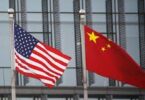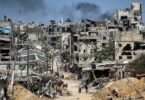PHILIP REMLER
The U.S. politician Tip O’Neill is credited with the phrase “all politics is local.” UK prime minister Neville Chamberlain, too, discovered the global reach of local politics, admitting on the eve of the Second World War that it was “horrible, fantastic, incredible . . . that we should be digging trenches and trying on gas-masks here because of a quarrel in a faraway country between people of whom we know nothing.” Most of us know nothing of the Moldova/Transdniestria conflict,1 and in general those who do find it “fantastic, incredible” that it might have serious geopolitical implications. Transdniestria has been the most relaxed of the “frozen” conflicts arising from the Soviet Union’s collapse. There has been no credible threat of renewed hostilities. The two sides—Moldova on the right bank of the Dniestr/Nistru River and the separatist region of Transdniestria on the left bank—are in constant contact, negotiation, and cooperation with one another. Thousands regularly cross the river for work, education, family visits, transit, and shopping. In 2021, however, the potential for a new war has been played up since an angry and aggressive statement by Dmitry Peskov, the spokesperson for Russia’s president. There followed a steady drumbeat, not exclusively from Moscow, of concern about a “political crisis” in Moldova amid warnings that Transdniestria may be “the most volatile dispute in this region.” How serious is this threat? How did it arise?
BACKGROUND
From the late 1980s, pro-Soviets in Transdniestria opposed what they saw as Moldova’s imminent secession from the Soviet Union and union with Romania. Moscow encouraged the Transdniestrians, providing military support when fighting broke out with the forces of independent Moldova in 1992 and helping separatists consolidate power on the left bank plus the right bank city of Bendery. The 1992 ceasefire left two Russian military entities in Transdniestria. One was the former Soviet Fourteenth Army, whose withdrawal was to be negotiated between Russia and Moldova. Renamed the Operational Group of Russian Forces (OGRF), it guarded military sites and munitions stores. The second was the Russian contingent of the Joint Peacekeeping Force established by the ceasefire, which also comprised Moldovan and Transdniestrian contingents.
Today’s strident declarations on the Russian military in Transdniestria by officials and pundits on both sides of the issue usually fail to distinguish between these two entities.2 Since the same soldiers rotate between them, distinguishing who serves in which command is difficult. Further muddying the waters, about 90 percent of the officers and virtually all of the enlisted personnel of the combined 1,500-strong presence are Transdniestrians in Russian uniforms. Their paychecks make Moscow one of the largest employers in the region’s tiny economy.3
Russia’s president, Boris Yeltsin, signed protocols at the 1999 OSCE Summit in Istanbul mandating the withdrawal of Russia’s arsenals in Moldova and the troops guarding them. While the United States maintains that the Istanbul Protocols applied to the OGRF and to the Russian peacekeepers, most NATO allies hold that the deal only applied to the OGRF. Russia engaged in the Istanbul-mandated withdrawals until 2003, when President Vladimir Putin negotiated a secret deal on Transdniestria with Moldova’s then president, Vladimir Voronin. Known as the “Kozak Memorandum,” this would have provided Russia with military basing rights in Moldova and a pro-Russian geopolitical orientation. When Voronin backed out of the deal under Western pressure, Russia halted withdrawals. Ever since, all Moldovan presidents have reiterated that Russia must restart and complete the withdrawals—all until Igor Dodon, who was elected in 2016 on the slogan “Împreună cu Rusia” (“Together with Russia”).
ALL POLITICS IS LOCAL . . .
Moldova inherited significant political divisions from the Second World War. The majority Moldovan, ethnically diverse right bank of the Dniester/Nistru was annexed by Romania in 1918 while the left bank remained within the Soviet Union. The 1939 Molotov-Ribbentrop Pact gave the right bank to the Soviets, who invaded in 1940. Romania and its Nazi allies invaded in 1941, and the Soviets re-invaded in 1944. Each new invader persecuted, deported, and executed untold thousands suspected of cooperation with the last. The result is a divided population: since independence, a plurality on the right bank—regardless of ethnicity—identifies with its Soviet heritage, fears Romania, and votes for communist or socialist parties. A slightly smaller group identifies with its Romanian heritage, fears Russia, and votes for right or center-right parties. A group in the middle holds the balance.
A pro-European coalition of right, center-right, and center-left parties took power from Voronin’s Party of Communists (PCRM) in 2009, but it was beset by infighting and corruption. The center-left Democratic Party was captured by an oligarch, Vlad Plahotniuc, and the whole coalition was brought down by a corruption scandal that saw $1 billion of government money disappear. Public disgust with the pro-European coalition propelled former Voronin ally Igor Dodon, who consolidated the leftist vote under his Party of Socialists, to victory in the 2016 presidential election. In the 2019 parliamentary elections the vote split four ways: Dodon’s Socialists and the pro-European center-right, led by Maia Sandu, each won a quarter of the seats; Plahotniuc’s Democratic Party was somewhat behind, and a new party, led by Ilan Şor, the man at the center of the billion-dollar banking scandal, came fourth. Plahotniuc was soon forced to flee an international arrest warrant, and enough of his deputies defected to the now-allied Dodon and Şor to give them a majority in parliament.
Last November, Sandu ran for president against Dodon and defeated him decisively in the second round. Dodon’s reaction has been remarkably similar to that of Donald Trump in the United States: claim fraud, try to delegitimize the winner, and try to cling onto power with a “scorched earth policy.” In Dodon’s social media output, he still refers to himself as “the president” and takes credit for COVID-19 stimulus payments, vaccine acquisitions, and other programs run by his successor’s administration.
Dodon’s allies in parliament—including its chair, Zinaida Greceanîi—have blocked Sandu’s proposed legislation and tried to limit her powers. Sandu tried to provoke early elections, in which it is predicted that Dodon’s Party of Socialists could lose half its deputies. Dodon and Şor are deeply unpopular and desperately tried to prevent a return to the polls. Dodon maintained that holding elections during the pandemic was impossible—conveniently forgetting that he favored a presidential election a few months earlier when he thought he could win.
After Sandu took office in December, Dodon’s allies in parliament rejected her first nominee to become prime minister and form a new government. Sandu then nominated Igor Grosu for the post on March 16, ignoring Dodon’s candidate. Parliament rejected Grosu twice, which according to the constitution should trigger early elections. In response, Dodon forced a bill through on March 31 declaring a sixty-day state of emergency, ostensibly owing to the pandemic, in an attempt to block a dissolution of parliament during that period. Dodon stated that parliament would rescind the state of emergency if Sandu appointed his candidate as prime minister (thereby removing the trigger for elections). After the Constitutional Court ruled in favor of Sandu, declaring that conditions for holding early elections did in fact exist, on April 23 the parliament voted to replace the court’s president with a Dodon ally. On April 28 the court ruled both that action and the state of emergency unconstitutional. Sandu immediately called early elections for July 11, 2021, and Dodon finally conceded that these will take place. However, it is premature to say that the Dodon-engineered standoff between parliament and Sandu has ended.
. . . BUT TO RUSSIA, ALL GEOPOLITICS IS LOCAL
Dodon has tried to enlist Russia in his struggle with Sandu and his efforts have fallen on fertile ground. Putin congratulated Sandu on her victory the day after her election (dashing Dodon’s hopes of Russian support to contest the election), but her reiteration of Moldova’s official position that the OGRF must leave Transdniestria was seen in Moscow as poor repayment for Putin’s courtesy. The Russian media expressed outrage. Though Sandu specifically did not call for the Russian peacekeepers’ withdrawal, even Putin’s press secretary got that wrong in his indignation.4
More significant, however, is how Moldova’s domestic politics fits into Russia’s existential—as it sees it—struggle with Ukraine following the 2014 annexation of Crimea. The Kremlin and its patrioty believe that a Ukraine charting its own course separate from Russia would doom Putin’s ambitions throughout the post-Soviet region. In April, Russia escalated its military pressure on Ukraine, massing its military along the border while fighting intensified in Donbas. Since Russia’s troops in Transdniestria must be supplied and replenished through Ukrainian airspace, its war with Ukraine has turned them into hostages to potential Moldovan-Ukrainian cooperation—including military cooperation.
Russia’s outrage on the issue mystifies even Transdniestria’s leadership, which sees nothing new in Sandu’s rhetoric and no indication that she is contemplating any move against the Russian troops there. But that does not alleviate the anxiety of Russian generals, now focused on their Ukrainian enemy. Hence Moscow’s saber-rattling, warning Sandu that moving against Russian troops would have dire consequences. Sandu, who understood this message even before taking office, has dialed back her rhetoric.
It is unclear how this drama will play out. Russia’s attitude and actions toward Moldova will have little to do with the crisis Dodon has manufactured inside Moldova to reverse a free and fair election, with Sandu’s rhetoric, or with the Transdniestria conflict—and everything to do with Russia’s crisis with Ukraine.
Courtesy: (carnegieendowment.org)






